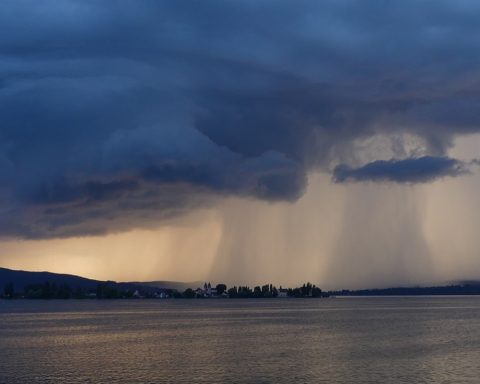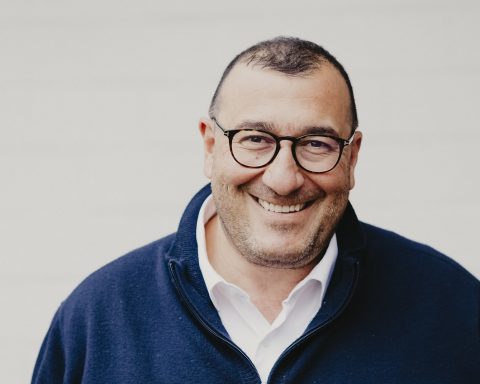Is foresight capable of influencing the future in a way that promotes what is desirable? Foresight was born in the thought of a man, Gaston Berger, who was confronted with the difficulties of elaborating public decision making. Since then, French and Anglo-Saxon schools have diverged, but continue to share an optimistic conviction: the future can be influenced in a favourable direction.
Gaston Berger, philosopher in action, was Director General of Higher Education at the Ministry of National Education when he first introduced the first elements of foresight, starting in 1955. To this end, he drew up a "prospective anthropology", designed to study the different "aspects of the situation of man in the world of tomorrow" and whose objective was to lead to the construction of an "efficient but happy society".
For Berger, being forward-looking "means seeing that there is a future to be made; that in this future, there are a certain number of broad outlines that have already been drawn [...] and that all sorts of possibilities, increasingly rich, increasingly fruitful, are offered to men", as he expressed it in the program "En Français dans le texte" (In French in the text). (RTF) of 16 June 1960.
The initial development of Gaston Berger's conceptions was limited in time: he died in November 1960, a little more than five years after having formalized the first principles of foresight.
But his argument and clarity of thought have won over the minds of many decision-makers, both business leaders and senior government officials, even though for Pierre Massé "the form and substance are imperfectly defined". As early as 1959, this commissioner for planning saw foresight as a way to move away from the determinism imposed by classical forecasting and to consider the plurality of possible futures to inform action. The first formal methods were thus to emerge a few years later from this requirement for "connection to reality": first, at the end of the 1960s, in the DATAR, with a method for developing scenarios developed at the instigation of Josée Landrieu then, at the end of the 1970s, at the SEMA, then at the CNAM, with Michel Godet which developed a comprehensive toolkit, formalized in 1985 in a textbook that would become a school textbook.
The seeds of the future, the facts of the future
 The forward-looking attitude initially defined by Berger will be challenged by the foresight of the present at the end of the 1990s. For its initiators, Edith Heurgon and Jean-Paul Bailly, the future must not be prepared from the future, but from the present: it is a question of detecting the transformations already at work in society. This new posture requires an inversion of the gaze: it is a question, as it were, of anticipating by looking at the present of the future, rather than the future of the present. However, while the means may differ, the end remains the same: to achieve a future shared by the greatest number.
The forward-looking attitude initially defined by Berger will be challenged by the foresight of the present at the end of the 1990s. For its initiators, Edith Heurgon and Jean-Paul Bailly, the future must not be prepared from the future, but from the present: it is a question of detecting the transformations already at work in society. This new posture requires an inversion of the gaze: it is a question, as it were, of anticipating by looking at the present of the future, rather than the future of the present. However, while the means may differ, the end remains the same: to achieve a future shared by the greatest number.
For both "strategic" and "present" foresight, the present time is the time for action. The idea of "detecting in the present [...] the seeds of the future, already there", as Edith Heurgon put it in issue No. 1 of the journal Millénaire3 , was already present in Pierre Massé's reflections with his "facts bearing the future". In the same way, the need to articulate expert, secular and sensitive knowledge in such a way as to open up the field of possibilities and to leave behind a single thought, was already a major concern of Gaston Berger, a requirement of his phenomenology: not to let oneself be taken in by appearances, to multiply looks, to summon "men who [...] will not only be able to bear a theoretical, external, abstract testimony, but will be able [...] to give the fruit of a profound experiential wisdom". (Intervening on the program "En Français dans le texte" )
A French style, an American style
Between these practices, the foundations are quite common. If there are radical differences, it is rather with Anglo-Saxon conceptions of anticipation. The first of these concerns the meaning of the term "foresight" itself, which only comes close to foresight if "strategic foresight" is specified. In the "American style", its meaning is restricted to the image of a given future. In the famous Brundtland reportpublished by the United Nations in 1987, the term "foresight" is used in the original English version and translated in the French version as "intuition". This example is a perfect illustration of this concept.
From this perspective, the term "foresight" should not be used to refer to the process, and associated tools, that leads to the definition of this image. In the "French style", foresight, like its supposed equivalent "strategic foresight", is considered to designate both a process and the result of this process in terms of action. This first opposition constitutes part of the explanation of the second, which concerns the practice of foresight.
Considering "foresight" as an outcome only allows the role of the prospector to be seen as providing images of given futures to given "clients", without the latter attaching any importance to the means used to establish them. This posture has two important consequences. First, the process of creating these visions of the future, while transparent to the client, is within the unique domain of the "futurist". The client is not involved in the realization of this work. This aspect certainly represents the strongest opposition to the "French style". For foresight, whether strategic or present day, it is fundamental that the beneficiaries of this work are themselves the producers. The role of the futurist is not to think about the future in the place of his client, but to accompany him, thanks to his experience and knowledge of methods, in a process of learning and organizational change that mixes imagination and rigour. But this radical opposition can only be understood in terms of the second consequence.
The primacy of the result or approach
 Illustration © Natali Prosvetova - "In anticipation of the spring vibration".
Illustration © Natali Prosvetova - "In anticipation of the spring vibration".
Secondly, considering "foresight" simply as a result does not imply any direct relationship with decision making and action preparation: the client simply receives these visions that will allow him to modify his state of awareness of a given situation. The "American style" speaks of "strategic foresight" not because it has anything to do with strategy development, but because its working horizon is simply greater than that of operational planning. In the "French style", it is precisely because foresight is directly related to action that it is strategic. Within an organization, the study of possible and desirable futures in themselves, or of transformations at work, is of no interest if it is not intended to influence action in a concrete way. And to ensure that the strategy is as appropriate as possible to the current and future realities of the organization, it must be shared and based on an intimate knowledge of the dynamics of the environment.
Alongside these oppositions, the two "styles" share two major principles, which are truly constitutive of modern forms of anticipation: the human will is capable of influencing the future in such a way as to favour what is desirable, and this capacity founds a moral obligation to reflect on the future and its possible trajectories. They also share one of the objectives of foresight: to make actors aware of the implicit assumptions on which their decisions are based in order to question and possibly modify them. Finally, they share the broad outlines of the foresight method as such (description of the system under study, identification of key variables and actors, formalization of trends, description of possible futures, choice of a desirable future, etc.), as well as numerous techniques and tools (cross-impact analysis, morphological analysis, scenarios, etc.). Overall, foresight is therefore today a world of contrasts, both in terms of conceptions and principles or practices. But this contrast is rich in meaning.
Philippe Durance for the M3 magazine, n°3 (2012)
![]()
- Interview of Philippe Durance by the magazine Millénaire3
- Article "Foresight / 2 - Current Issues" by Cédric polère
- Book "Creativity and innovation in the territories", by Philippe Durance and Marc Mousli, (CAE report no. 92 documentation française September 2010 / Pocket version under the title "Libérer l'innovation dans les territoires").
- Book" Towards globalized civilizations? From ethology to prospective: Colloquium of Cerisy ", by Josée Landrieu
- Book" The service economy for sustainable development. New wealth, new solidarity", Colloquium of Cerisy, Prospective, Essays & Research, by Edith Heurgon and Josée Landrieu / Edition L'Harmattan (2007)
- Book "Tomorrow is already here" of " Jean-Paul Bailly Editions de l'Aube (1999)
Illustration © Anticipation Book Club












